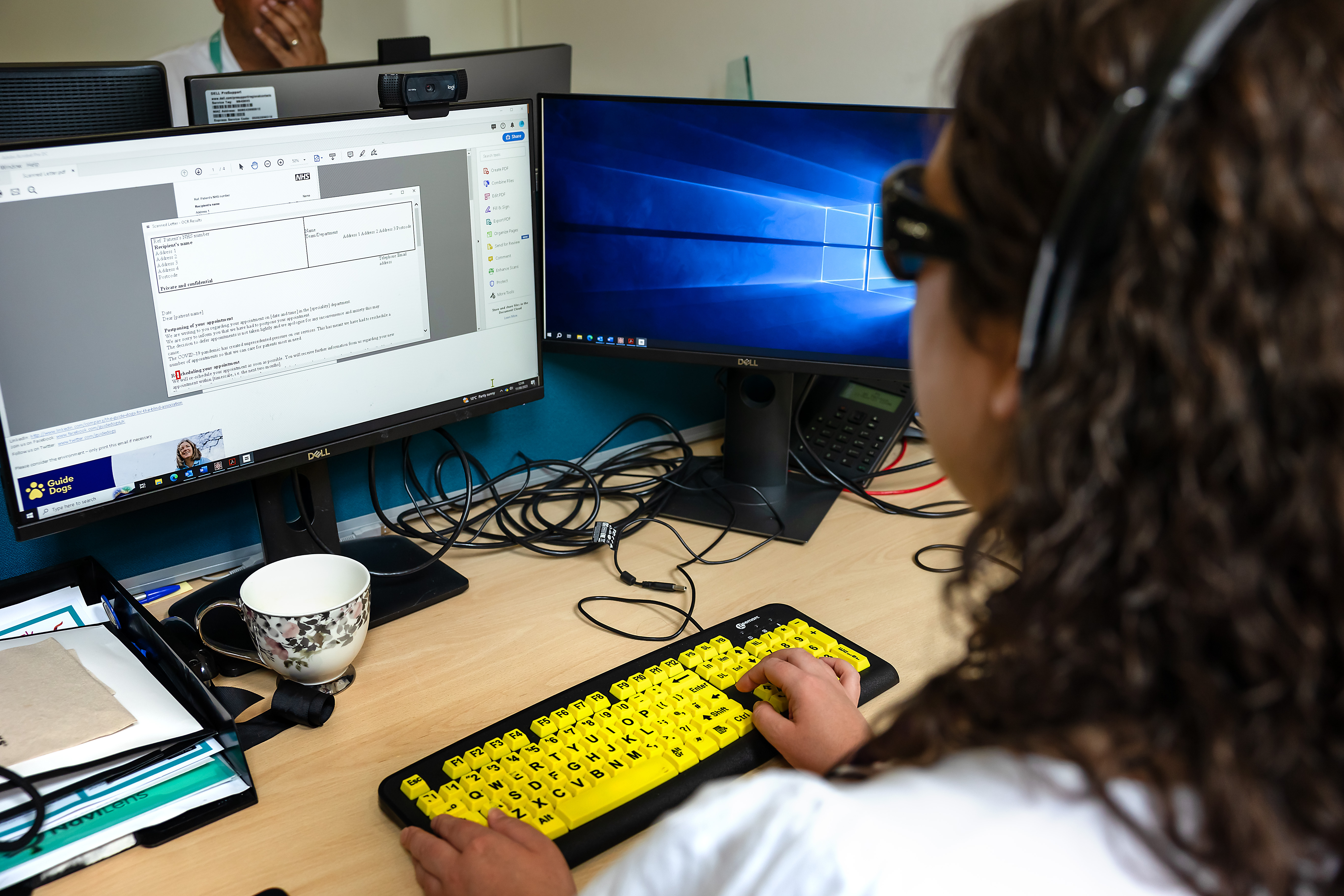
Google Chrome feature makes PDFs more accessible
- Topics:


In today’s rapidly evolving digital age, technology plays a pivotal role in the lives of millions around the globe. For someone like me, living with a vision impairment, the digital realm is not just a convenience; it's a lifeline that bridges the gap between accessibility and autonomy. Every day, I navigate through both my personal and professional worlds with the help of technology, underscoring the critical need for accessible information. This necessity goes beyond mere preference—it is the foundation upon which I build my learnings, development, and maintain my independence.
Unfortunately, the digital landscape is not without its barriers. A significant challenge that many people with vision impairments face is the accessibility of web content, particularly PDF documents. An internal Google study shed light on this issue, revealing that a staggering 360 billion PDFs, which account for approximately 12% of all PDFs on the web, are inaccessible to screen readers. This statistic is not just a number; it represents countless missed opportunities for learning, engagement, and independence for those of us who rely on screen readers to access digital content.
However, the horizon is brightening with the advent of new technologies aimed at tearing down these barriers. A prime example of this progress is the introduction of new features in ChromeOS, specifically designed to enhance accessibility for people with vision impairments. Among these innovations, a standout feature is the built-in capability of the Chrome browser on Chromebooks to perform Optical Character Recognition (OCR) on PDF documents. This functionality is a game-changer, as it enables screen reader users like myself to extract text from PDFs that were previously inaccessible. By integrating OCR technology directly into ChromeOS, Google is taking a significant step forward in making the digital world more inclusive.

“The steps Google are taking to make chrome OS more accessible to screen readers is very positive. In today’s world there is absolutely no reason why someone with a vision impairment should face barriers in digital technology as getting it right doesn’t require any extra effort from developers, providing accessibility is considered from the get-go. I’m very pleased to see the work Google has been doing, it’s one small but vital step in the right direction.”
Alex Pepper, Head of Accessibility at Guide Dogs

The empowerment that technology provides cannot be overstated. For those of us with vision impairments, the ability to access information in a format that is readable is not just about convenience—it's about being included in the digital conversation. The advancements in technology, such as the OCR feature in ChromeOS, serve as a beacon of progress, highlighting how innovation can foster independence and enhance the quality of life for people with vision impairments.
The digital age offers immense potential for enhancing the independence and quality of life for people with vision impairments. Through the development of accessible technologies like the OCR feature in ChromeOS, we are moving closer to a world where information is freely accessible to everyone. This is not just a vision for the future—it's a reality that is gradually unfolding, thanks to the relentless pursuit of inclusivity in the digital realm.
Google's commitment to accessibility shines brightly in its latest Android version rollout for Google Pixel. These updates bring a plethora of improvements tailored to make the Pixel experience more inclusive and accessible for people with vision impairments.
As a blind person, I recently had the incredible opportunity to visit Google's Accessibility Discovery Centre in London. It is a place where engineers, researchers, product teams, and partners come together to create ground-breaking accessible technologies. This centre aims to eliminate the barriers faced by people with disabilities on a daily basis.
We’re encouraging puppy owners to look out for beards and other physical characteristics as socialisation opportunities, after research found one in five dog owners revealed their dogs have shown signs of fear or confusion when encountering unfamiliar physical attributes such as beards, facial piercings, tattoos, and unconventional hairstyles.